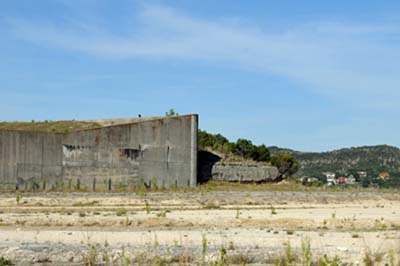|
Canyon Dam was built on the Guadalupe River to control
flooding and to provide a watershed during drought. In 2002, the Guadalupe River watershed received 34" of rain
in a weeks time. This massive amount of water overwhelmed the lakes storage capacity and started flowing over the emergency
spillway. The water going over the spillway was 7 feet deep. As you will see in the photos, the spillway
is very wide so that was a whole bunch of water, 67,000 gallons per second to be exact. Yes, per second. This overflow
kept up for 1 1/2 weeks. It carved a gorge 50 feet deep in solid limestone and exposed terrain that had not
been seen for 70-110 million years.



Just imagine, water, 7 feet deep flowing across this expanse.
Residents living nearby during the flood commented on the loud and continuous rumbling noise in addition to the sound of the water flowing. This rumbling was blocks of limestone the size of passenger cars being thrown about by the water.






No, it is dried, fossilized mud
that filled a tunnel dug by some
marine critter. A snail perhaps?

Giant shell. Note the size of the foot for comparison.

It is a fossilized fungi.
Yeah, like a mushroom!
Millions and Millions of fossilized sea shells.



|
|